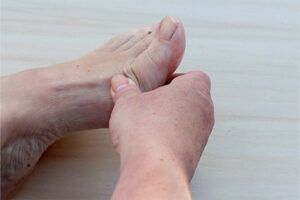Dermatology
Plaque Psoriasis
Choosing Topical Treatments for Plaque Psoriasis: Patient Preferences
Overview
With respect to topical therapy for plaque psoriasis, individualizing treatment draws on factors such as the location of the skin lesions, the patient’s preferences regarding the available vehicles, the relative ease of application, and the potential for side effects.
Expert Commentary
Boni E. Elewski, MD
|
|
“Tailoring the therapy to each patient can ultimately go a long way toward optimizing treatment adherence. Importantly, when a topical treatment is being considered for psoriasis, a detailed discussion of the options helps to establish individual patient preferences.”
Topical agents are generally prescribed for all patients with plaque psoriasis, either as monotherapy in the primary treatment setting in those with less severe disease or as an adjunct to systemic therapy in those with moderate to severe disease. From the clinician’s perspective, topical treatment selection depends on a variety of factors, including the specific sites of involvement. From the patient's perspective, the ease of application, the smell, and the safety of the treatment are often key considerations. Further, many patients have concerns about topical steroids and the risk of skin atrophy with chronic use. Other factors that can shape the discussion about treatment options include the cost of treatment and the patient's insurance coverage.
Regarding particular formulations and vehicles, the location of the lesions strongly influences topical agent selection. Specific treatments may be preferred or have greater effectiveness depending on whether the lesions are located on the scalp or hair-bearing skin, areas where the skin is thicker (eg, palms or soles), the face, the genital area or intertriginous areas, or flexural areas or areas with fissured/cracked skin (Table).
Table. Location of Psoriasis and Select Considerations Regarding Topical Preparations
|
Location of Psoriasis |
Select Considerations for Topical Treatments |
|
Scalp or hair-bearing skin |
A liquid or gel preparation might be preferred for ease of delivery to the affected areas without greasiness |
|
Palms or soles |
A stronger, higher-potency preparation may be required due to the thicker skin in these areas |
|
Face |
A milder or steroid-free product may be preferred; ointments may be less cosmetically appealing due to greasiness |
|
Genital area or intertriginous areas |
The skin is thin in these areas, making them more sensitive to certain therapies; steroid-sparing approaches may be considered |
|
Flexural areas or areas with fissured/cracked skin |
Ointments may be less likely to cause a burning sensation, whereas gels and alcohol-based solutions and sprays may cause burning |
Starting with lesions on the scalp or hair-bearing skin, a liquid or gel is often preferred for ease of delivery to the affected areas without greasiness. Each patient is different, however, and exceptions do occur. For instance, while liquids or gels may be preferred for hair-bearing skin, individuals with dry hair/scalp may actually prefer an ointment rather than a liquid or gel due to its scalp-moisturizing effects.
For lesions on the palms or soles, a stronger, higher-potency preparation may be needed due to the thicker skin in these areas. For lesions on the face, a milder or steroid-free product might be selected, and ointments may be less cosmetically appealing due to greasiness. For the genital area, there are several different first-line options, including a mild corticosteroid with or without calcitriol, which is a form of vitamin D. The risk of skin atrophy is increased with high-potency corticosteroids in intertriginous areas, and psoriasis often recurs after the discontinuation of mild topical corticosteroid treatment in these areas. Thus, steroid-sparing approaches are important to consider, perhaps especially so in genital psoriasis in the chronic treatment setting. Finally, for flexural areas or areas with fissured/cracked skin, ointments may be preferred over gels and alcohol-based products because of the lower chance of the patient experiencing a burning sensation during application.
Tailoring the therapy to each patient can ultimately go a long way toward optimizing treatment adherence. Importantly, when a topical treatment is being considered for psoriasis, a detailed discussion of the options helps to establish individual patient preferences. If the patient is happy with the vehicle, then they may be more likely to adhere to the treatment. For example, for a female patient who has facial psoriasis, a cream or lotion might be a better option than an ointment. Ointments tend to be greasier, and if a patient is given an ointment to apply to their face, they may not use it.
Liquids are not practical for use in large affected areas because they are only available in small volumes that are difficult to spread over larger areas. We usually use a liquid, gel, or foam preparation for lesions under the nails or on the scalp, as applying a cream or an ointment under the nails is not optimal and, as previously noted, a liquid or gel is often easier to apply to the scalp and is less greasy.
While patient preferences and lesion location are important considerations when making topical treatment decisions, many other considerations may come into play. A good resource for additional information on this topic was published by Elmets et al (ie, joint guidelines from the American Academy of Dermatology and the National Psoriasis Foundation).
References
Barnes TM, Mijaljica D, Townley JP, Spada F, Harrison IP. Vehicles for drug delivery and cosmetic moisturizers: review and comparison. Pharmaceutics. 2021;13(12):2021. doi:10.3390/pharmaceutics13122012
Boeri M, Saure D, Schuster C, et al. Impact of clinical and demographic characteristics on patient preferences for psoriasis treatment features: results from a discrete-choice experiment in a multicountry study. J Dermatolog Treat. 2022;33(3):1598-1605. doi:10.1080/09546634.2020.1869145
Elmets CA, Korman NJ, Prater EF, et al. Joint AAD-NPF guidelines of care for the management and treatment of psoriasis with topical therapy and alternative medicine modalities for psoriasis severity measures. J Am Acad Dermatol. 2021;84(2):432-470. doi:10.1016/j.jaad.2020.07.087
Hoelker S, Ninosu N, Buettner S, Peitsch WK, Schaarschmidt M-L. Patient preferences for topical psoriasis treatments: a discrete choice experiment. J Dermatolog Treat. 2022;33(5):2595-2604. doi:10.1080/09546634.2022.2059052
Hong JJ, Mosca ML, Hadeler EK, Brownstone ND, Bhutani T, Liao WJ. Genital and inverse/intertriginous psoriasis: an updated review of therapies and recommendations for practical management. Dermatol Ther (Heidelb). 2021;11(3):833-844. doi:10.1007/s13555-021-00536-6
Kircik LH, Stein Gold LF, Pariser DM. Improving adherence to topical therapies through improved clinician-patient communication and shared decision making. Cutis. 2019;103(4S):S13-S15.
Robbins AB, Gor A, Bui MR. Topical crisaborole—a potential treatment for recalcitrant palmoplantar psoriasis. JAMA Dermatol. 2018;154(9):1096-1097. doi:10.1001/jamadermatol.2018.2397
Teixeira A, Teixeira M, Almeida V, et al. Does the vehicle matter? Real-world evidence on adherence to topical treatment in psoriasis. Pharmaceutics. 2021;13(10):1539. doi:10.3390/pharmaceutics13101539
Tiedemann Svendsen M, Feldman SR, Tiedemann SN, Stochholm Sørensen AS, Ringgaard Rivas CM, Andersen KE. Psoriasis patient preferences for topical drugs: a systematic review. J Dermatolog Treat. 2021;32(5):478-483. doi:10.1080/09546634.2019.1675855











